Have I ever mentioned that strange coincidences have been happening to me ever since I started following the 3D printing industry full time? Growthobjects launching in Barcelona, 3D Spot in Lisbon, the FabLab in Catania, Shapeways’ opening day in NYC, the 3D printing show taking place in Israel, all happening just as I happened to be passing through town. I could go on forever. The latest one to add to the list is Modell’o, the first 3D print shop in Brussels, opened in 2012 by my new-found friend Thomas Baldi.
What happened is that, the day after I got my ticket to Brussels for Materialise World Conference 2015, I was contacted through Facebook by Thomas, who was in Milan for an event organized by his local partners for Design Week. Needless to say, we arranged for me to visit the shop while in Brussels which, it should be noted, would not have been possible without another helping hand from Giorgio Magistrelli, who is working with the EU Commission and CECIMO on Additive Manufacturing. Giorgio knew me from 3DPI, where he has written in the past, and also knew Thomas, so he offered to give me a ride to the shop, located on Chaussée de Waterloo, 337, in Saint-Gilles, during the MWC lunch break. With this arrangement, I was able to not miss the conference, while still getting see Modell’o.
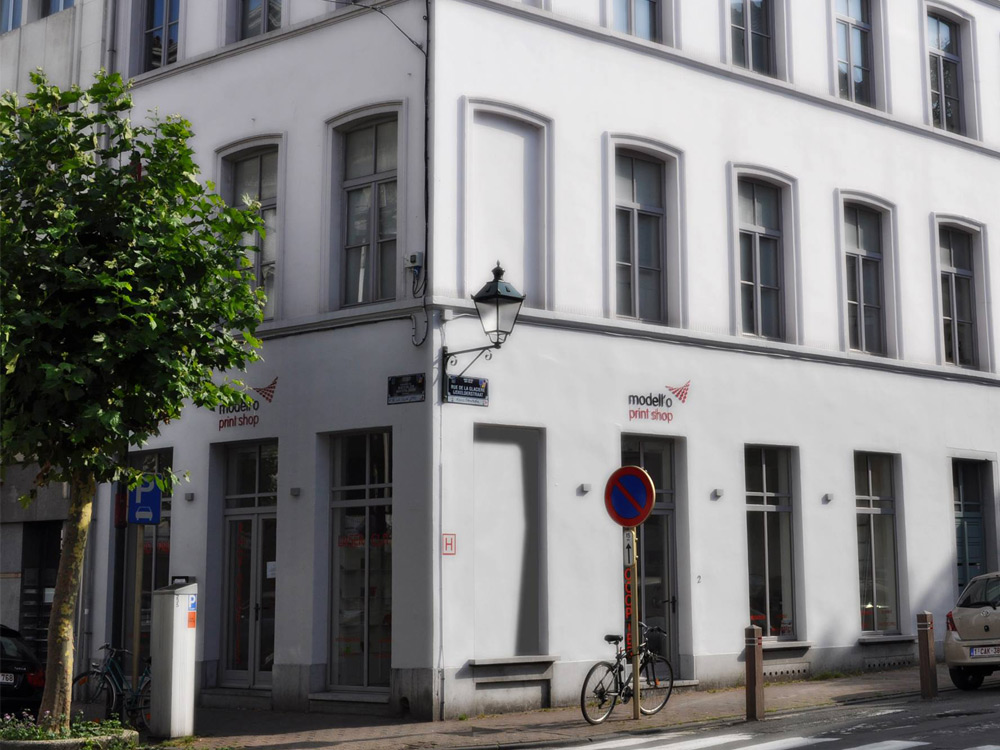
I have to admit, rushing around with so much to do and so little time is not easy. However, Thomas’s shop was well worth the visit. He has been in business for a while now and he has now fine tuned a business model that works, with 3D printing services now representing as much as 60% of revenues. The rest is mainly laser cutting, digital plotting, and general artisan manufacturing jobs, which are entirely compatible with 3D printing.
Of course, this was no easy task. Modell’o’s business model is exemplar in that it uses new, low-cost 3D printing technologies to produce useful products. However, these technologies – which are represented mainly by two MakerBot 2X’s and one Form1+ – do require a good amount experience for their potential to be fully exploited. This means both knowing how to work the machines to get optimal results and – perhaps even more importantly – knowing what to feed them: the proper designs.
Thomas’ architectural background brought him to master Rhino, while his business partner, who has an engineering background, is more familiar with Dassault Systems; SolidWorks and Katia. And, now, Thomas has been switching over to Autodesk’s Fusion 360 (one of the reasons why Thomas got in touch with me during Design Week and participated at the Fusion 360-heavy Arthesis event).
While it is true that the shop uses systems that can be considered “low-cost”, it is also true that these are not “cheap” systems; the MakerBot 2X is arguably the best 3D printer MakerBot has ever made, while the Form1 is a $3.000 system that rivals much more expensive machines. Even the rotational 3D scanner used – produced by NextEngine – is no toy and costs upwards of €3.000.
All these carefully balanced factors helped Thomas build a profitable 3D printing business even in a city closest to one of the largest 3D printing services in the world, Materialise. Naturally, they have entirely different targets: Modell’o’s customers are, in part, architecture students (he is conveniently located near the University), as well as a growing number of small businesses and studios. But the most important business segment for 3D printing is exactly what you might expect: custom replacement parts, which he 3D prints in ABS on a MakerBot 2X.
He has also been working at developing a new line of 3D printed products, with which he can showcase his skills as a designer and his ability to use fused filament fabrication. Every item in the collection comes with an elegantly laser-cut box. The fused filament collection focuses on their Lamp’o table lamps. Other items on sale – such as the Vor’o bracelets – are professionally laser-sintered through an outside service (hint: it’s not Materialise).
At this moment – Thomas told me – demand has not been sufficient to invest in a full-color gypsum or paper-based 3D printer, but he has been considering it. Perhaps by the time HP is ready with its MultiJet Fusion professional 3D printing system, the consumer market will be ready to demand more full-color prints. In that case, shops such as Modell’o will certainly be the best positioned to ride on that new wave of 3D printing B2C innovation.

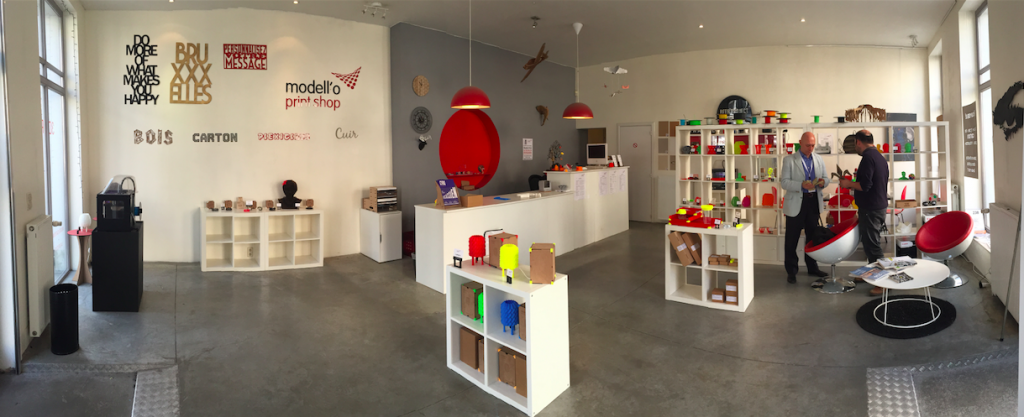

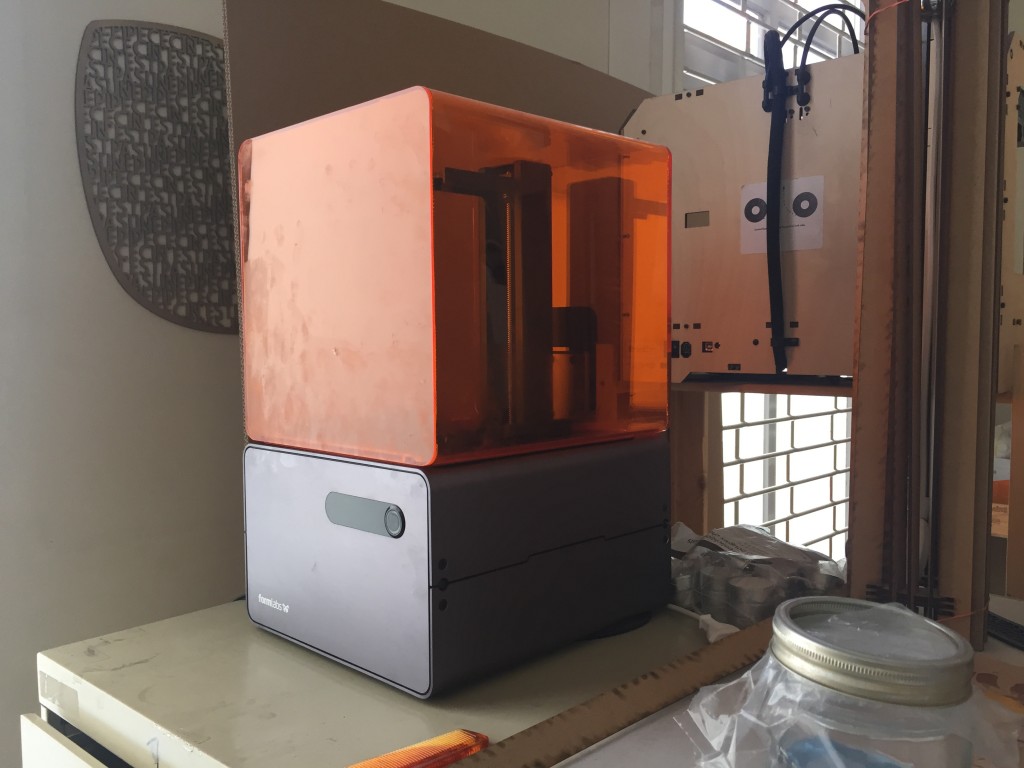

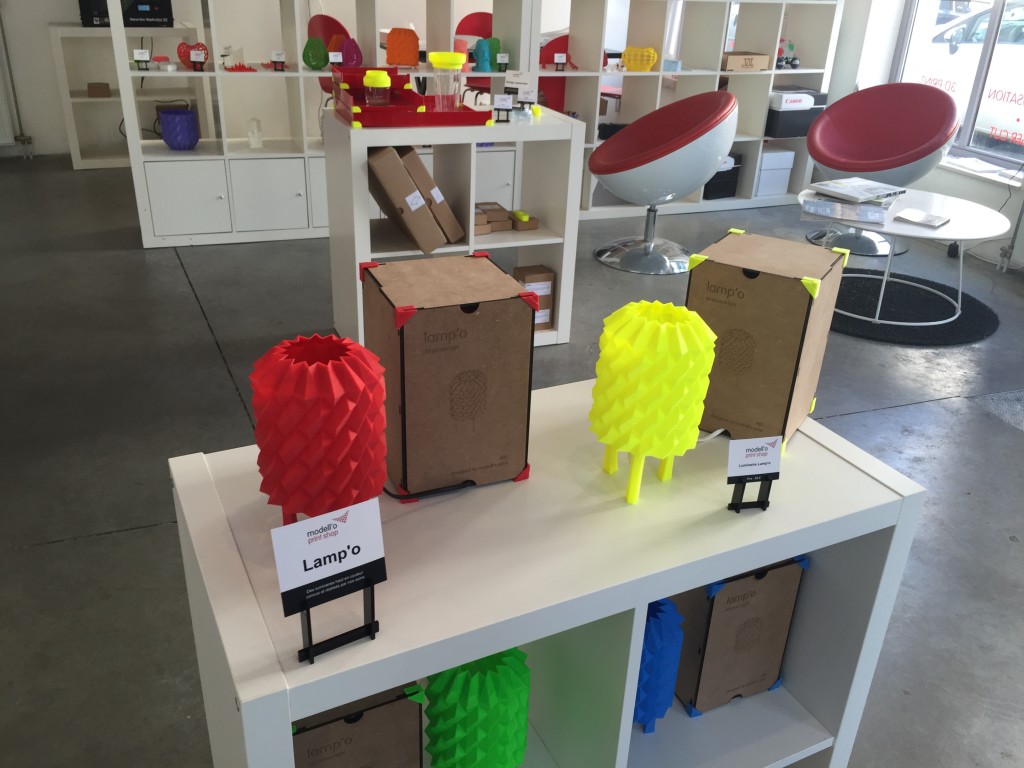
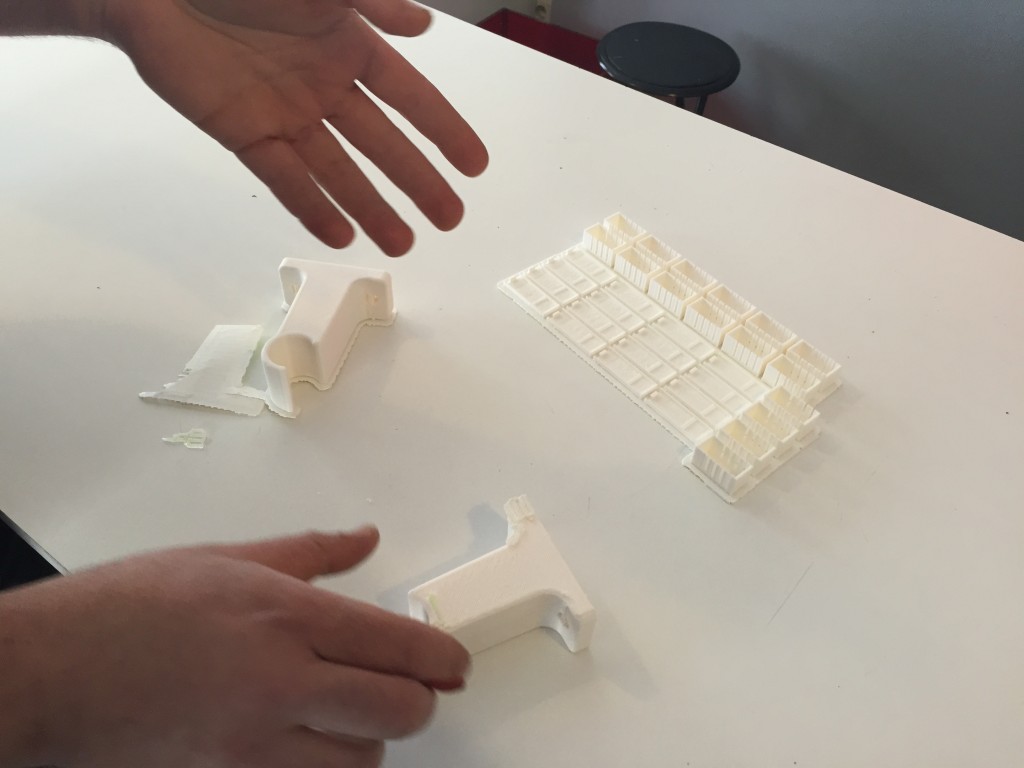
Leave A Comment